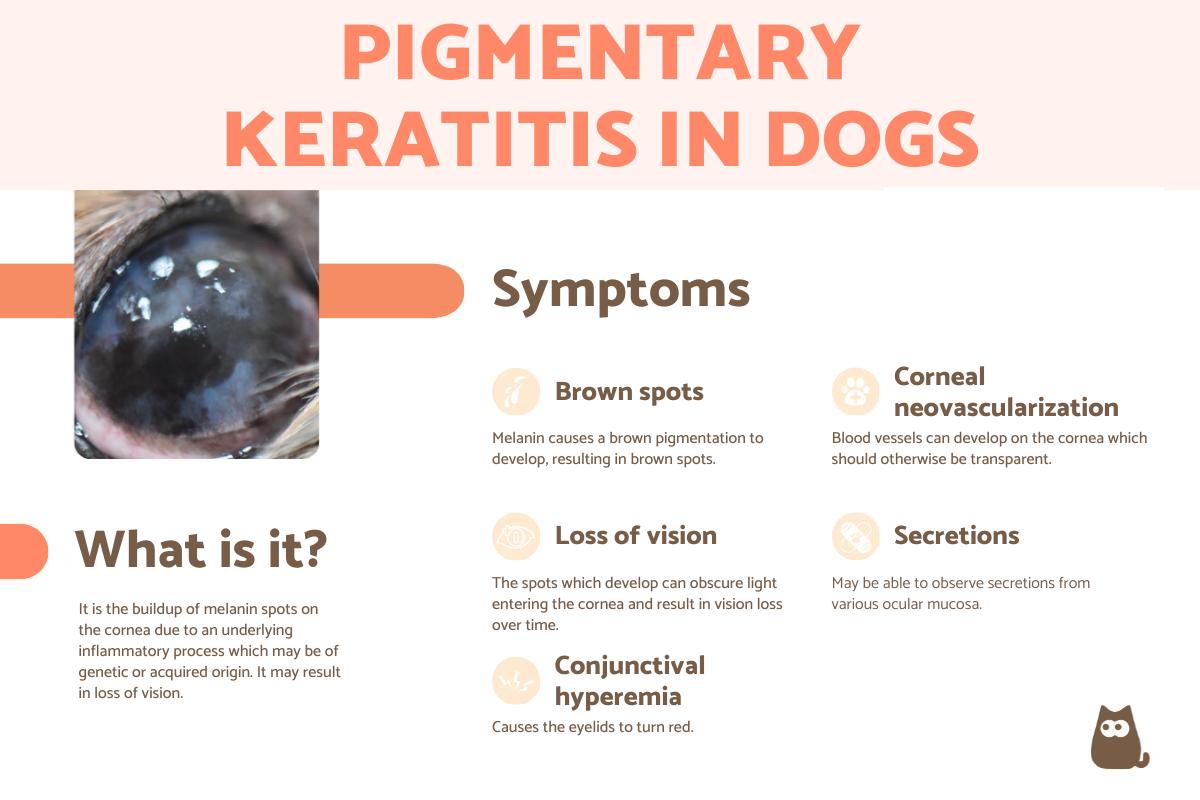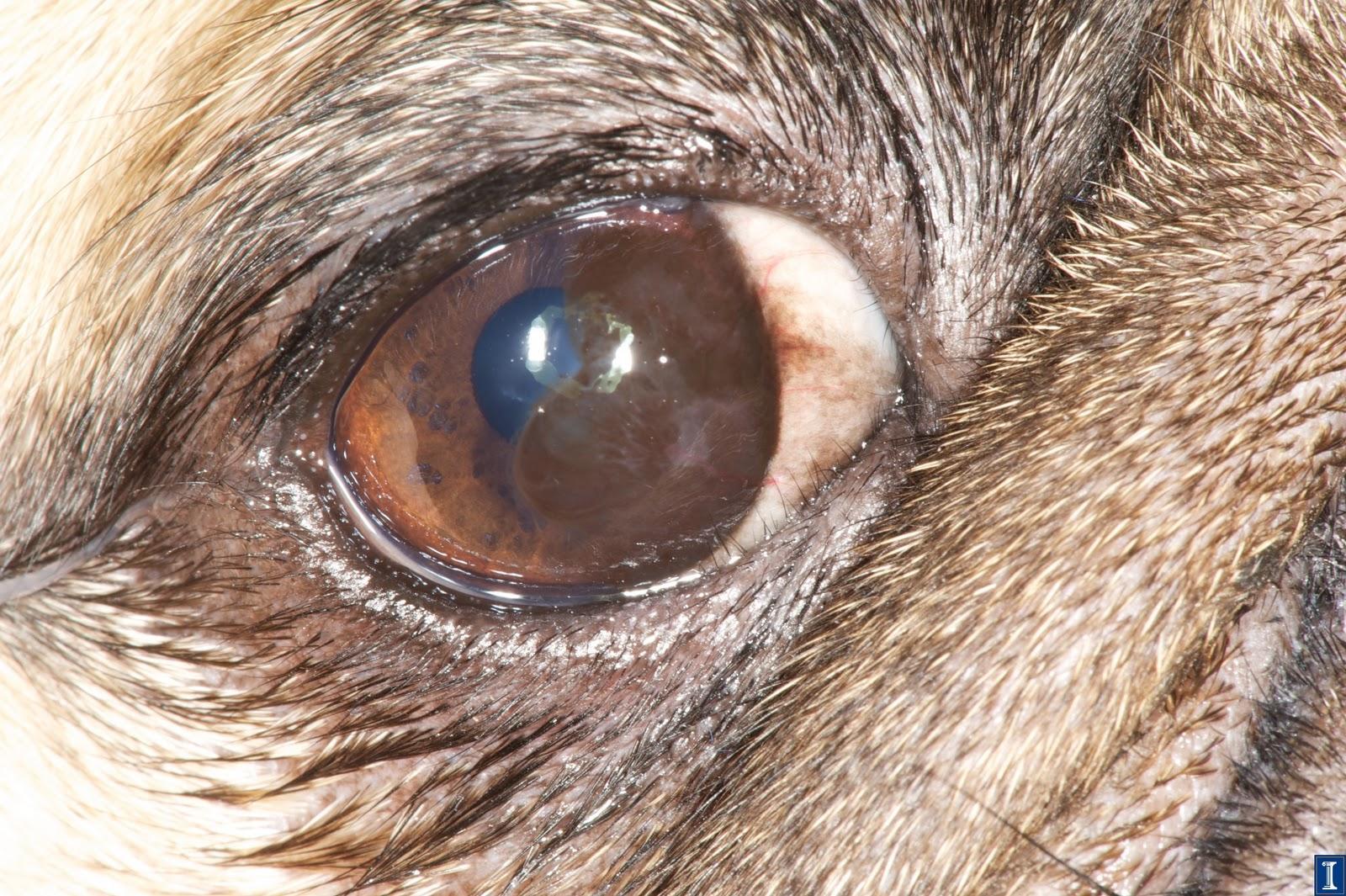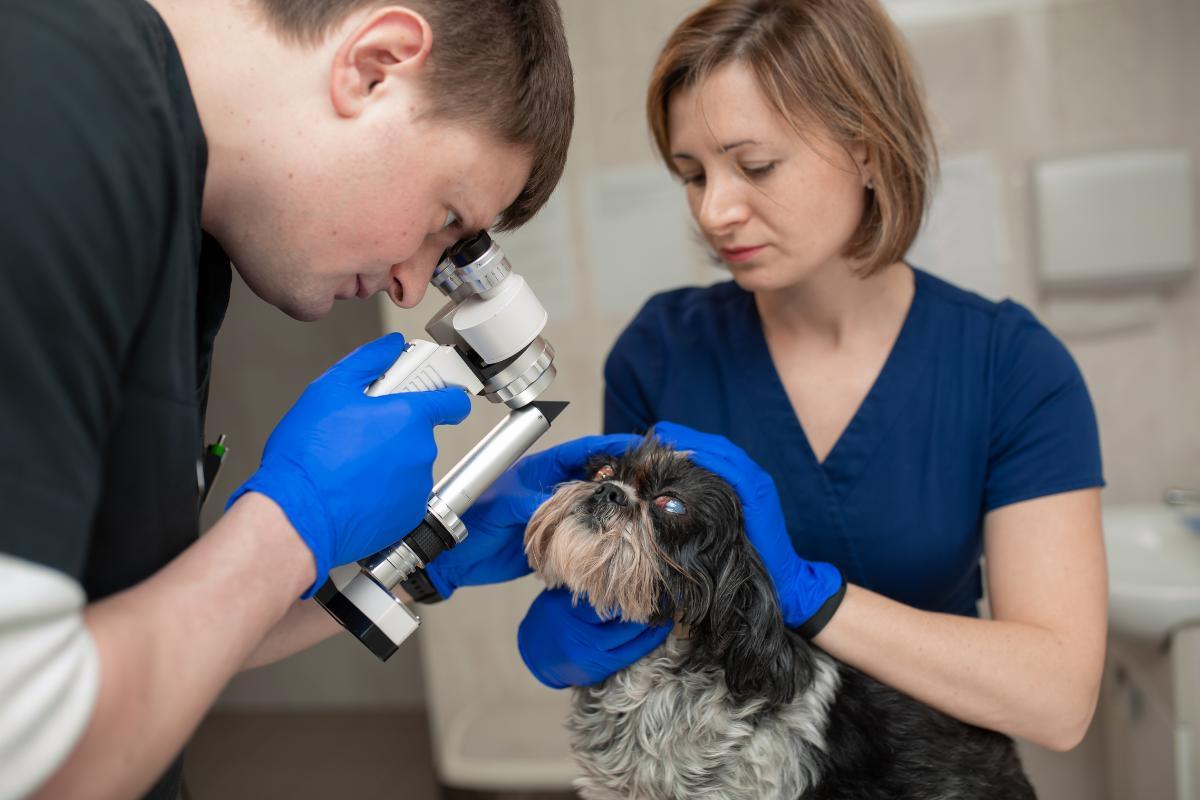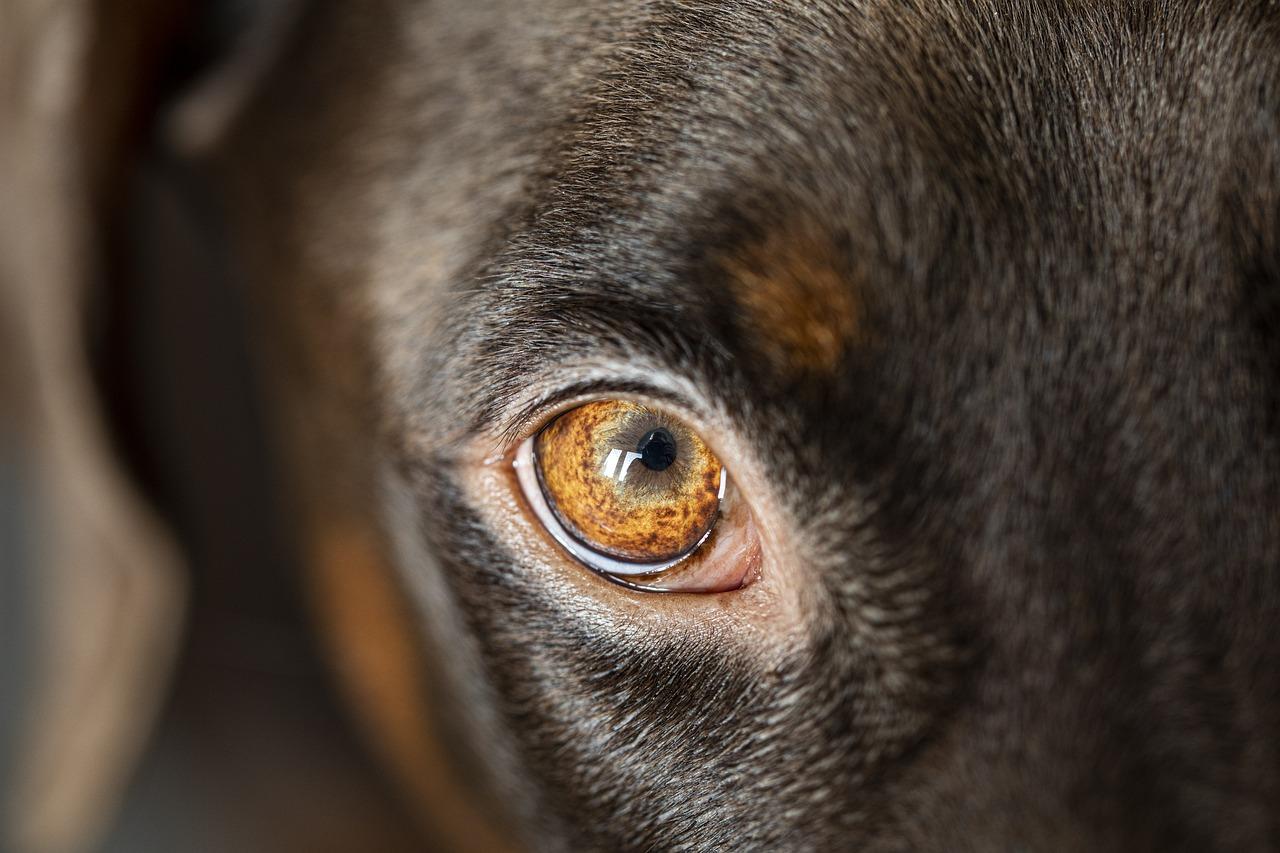Pigmentary Keratitis in Dogs



See files for Dogs
If you see a brown spot on your dog's eye, it is possibly due to pigmentary keratitis. Also known as pigmentation keratitis in dogs, it is a result of chronic inflammatory processes which affect the cornea of the eye. The cornea is the transparent structure that covers the iris and pupil, allowing light rays to penetrate the eye and facilitate vision. When long-term inflammatory processes occur, it can lose transparency by acquiring dark pigmentation on its surface. This pigmentation is the buildup of the biomolecule known as melanin. Since the underlying cause is an inflammatory or irritating process, pigmentary keratitis requires veterinary diagnosis.
At AnimalWised, we discover the causes and treatment of pigmentary keratitis in dogs. We look at the long-term effects of this process and how it can impair their vision.
- What is pigmentary keratitis in dogs?
- Pigmentary keratitis in dogs symptoms
- Causes of pigmentary keratitis in dogs
- Diagnosis of pigmentary keratitis in dogs
- Can pigmentary keratitis in dogs be cured?
- Pigmentary keratitis in dogs treatment
- How long does it take for pigmentary keratitis to heal in a dog?
- Home remedies for pigmentary keratitis in dogs
What is pigmentary keratitis in dogs?
The cornea is the transparent exterior part of the eye which covers the iris, pupil and anterior chamber. This transparent structure allows light to pass into the eye, providing focus for vision dur to light refraction. Light rays penetrate the cornea, then pass through the pupil and the lens to finally reach the retina and provide an image registered by the brain.
Pigmentary keratitis is a form of hyperpigmentation which occurs on the cornea of a dog's eye. This dark coloration is a result of melanin buildup. The underlying cause is usually a chronic inflammatory process which leads to eye damage. Keratitis is the scientific term for corneal inflammation. When the cornea is damaged, melanocytes invade its structure and produce melanin, meaning this type of keratitis in dogs results in pigmentation changes.
In most cases, this pigment is deposited in the most superficial layer of the cornea (specifically in the epithelium and superficial stroma). Since melanin pigment is brown, it usually causes a brown spot or brown spots to appear on a dog's eye. Regardless of the cause of the pigmentation, the loss of transparency of the cornea will prevent light rays from properly penetrating the interior of the eye. This can result in a loss of vision.
Difference between pigmentary keratitis and corneal melanosis
While they are related conditions, corneal melanosis differs slightly. Corneal melanosis is the broader term for melanin deposits on the cornea. This can be due to various causes and is less specific. It includes acute conditions such as physical trauma to the cornea. Pigmentary keratitis specifically refers to the buildup of melanin as a result of chronic inflammatory processes.
Pigmentary keratitis in dogs symptoms
The symptoms of pigmentary keratitis in dogs can vary depending on the underlying cause that triggers the process. While the defining clinical sign is the melanic pigmentation itself, the symptoms of pigmentary keratitis in dogs include:
- Dark spots on the surface of the eye
- Loss of vision
- Conjunctival hyperemia (red eye)
- Corneal neovascularization (superficial and deep blood vessels in the cornea)
- Mucous secretion
The cornea does not have blood vessels in it because it needs to remain fully transparent for optimal vision. If neovascularization occurs, it can further inhibit vision, in addition to the keratitis. Learn more about why a dog has blood in their eye with our related guide.

Causes of pigmentary keratitis in dogs
We have explained that pigmentation keratitis in dogs is a chronic condition. This is because it takes time for the melanin to collect in the cornea due to the underlying process. This process is inflammatory or is a result of irritation which causes inflammation. The causes include:
- Viral or bacterial infections: various types of infection can result in inflammation of the cornea and subsequent keratitis.
- Immune-mediated causes: immune-mediated pigmentary keratitis is especially common in brachycephalic dog breeds such as Pugs, French Bulldogs and Shih Tzus. It is a multifactorial disease, but the ocular conformation, reduced tear production and other issues common in these breeds can influence its development. This suggests a hereditary component. It can appear in young dogs, although it is more common for it to manifest after 4-5 years of age.
- Traumatic causes: such as distichiasis (eyelashes that grow in the Meibomian glands and come out through the gland's own orifice), ectopic cilia (eyelashes that grow in the Meibomian glands but, instead of coming out through the gland's orifice, do so through the conjunctiva of the eyelid), entropion (internal rotation of the edge of the eyelid) or eyelid tumors.
- Alteration of tear production: such as that which occurs in dry keratoconjunctivitis.
Diagnosis of pigmentary keratitis in dogs
Diagnosis of pigmentary keratitis requires a complete ophthalmologic examination, including:
- Examination by direct visualization and under a slit lamp for examination of the cornea and conjunctiva.
- Examination of the adnexa (eyelids, eyelashes, etc.) to rule out the existence of distichia, ectopic cilia, entropion, palpebral tumors, etc.
- Schrimer's test to assess tear production and rule out the existence of dry keratoconjunctivitis.
- Fluorescein test to rule out the existence of corneal ulcers.
Learn more about the common eye conditions in dogs which can also be diagnosed using the above tests.

Can pigmentary keratitis in dogs be cured?
It is important to know that pigmentary keratitis is not always curable. For example, when the disease is acquired due to an infectious or traumatic origin, the establishment of a temporary treatment will be sufficient to resolve the problem. When the origin is genetic the treatment will not be curative, although it will improve the symptoms and allow the animal to lead a normal life. This is often the case in immune-mediated pigmentary keratitis.
Pigmentary keratitis in dogs treatment
As we have explained, whether pigmentary keratitis in dogs can be cured will depend on the cause. In addition, the advancement of the underlying cause will influence the treatment options which are available. Treatment of pigmentation keratitis can include:
- Pharmacological treatment: with antibiotics in case of infectious keratitis, corticosteroids (such as dexamethasone) and immunomodulators (such as tacrolimus or cyclosporine) in the case of immune-mediated keratitis. Learn more about the types of corticosteroids in dogs with our related guide.
- Surgical treatment: such as superficial keratectomy in very advanced cases in which the entire cornea becomes pigmented. It may also include specific surgeries in cases of traumatic keratitis for the removal of ectopic cilia, eyelid tumors or the correction of entropion.
Our article on symptoms and treatment of eye tumors in dogs reveals some of the most dangerous inflammatory processes in a dog's eye.
How long does it take for pigmentary keratitis to heal in a dog?
As we have mentioned, the treatment of pigmentary keratitis in dogs does not always achieve a definitive cure of the process. In acquired diseases such as infectious keratitis, the treatment is usually temporary and can take between one and two weeks. In the case of genetic diseases, such as immune-mediated keratitis, a lifelong treatment must be established to control the symptoms and prevent the progression of the disease.

Home remedies for pigmentary keratitis in dogs
Pigmentary keratitis is a condition that should not be underestimated. It indicates the existence of a chronic eye problem and can compromise the dog's vision. If any symptoms compatible with the disease appear, it is vital to go to the veterinarian immediately to identify the cause of the pigmentation and start the most appropriate treatment in each case.
As we have seen, curing pigmentary keratitis in dogs requires the administration of specific veterinary treatments, with the possibility of surgical intervention. These treatments must be determined by a veterinary professional. We recommend that you avoid any treatment or home remedy, since many products can cause eye irritation and make the process even worse.
Our related article on common eye infections in dogs helps to illustrate the importance of veterinary diagnosis.
This article is purely informative. AnimalWised does not have the authority to prescribe any veterinary treatment or create a diagnosis. We invite you to take your pet to the veterinarian if they are suffering from any condition or pain.
If you want to read similar articles to Pigmentary Keratitis in Dogs, we recommend you visit our Eye problems category.








